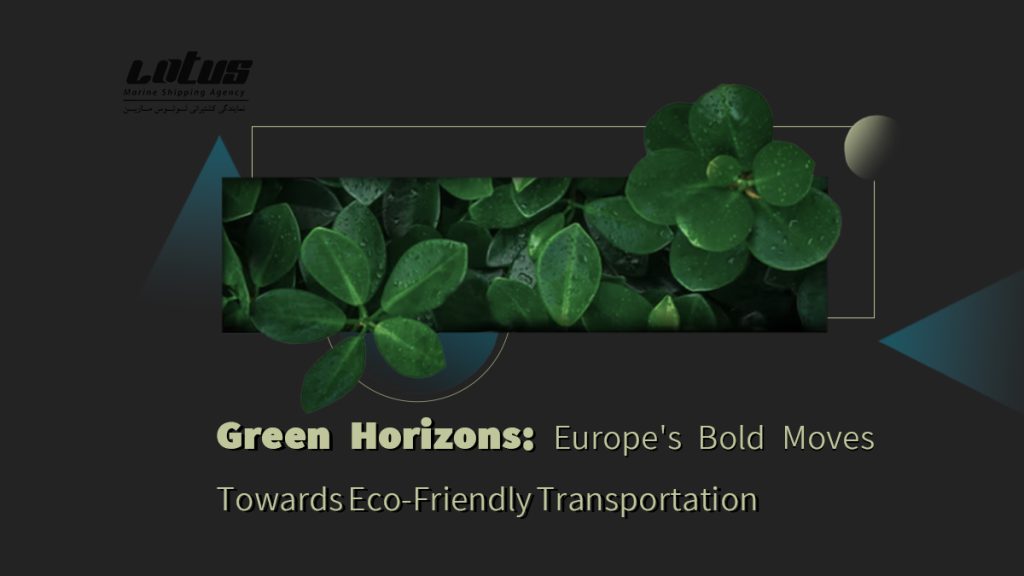In an era of increasing environmental awareness and the urgent need to combat climate change, Europe has emerged as a pioneer in embracing eco-friendly transportation solutions. This article will delve into the continent’s innovative strides towards sustainable mobility, exploring various initiatives and technologies that are reshaping the way people move while prioritizing the health of our planet.
Introduction
Europe’s commitment to environmental sustainability has ushered in a new era of transportation. With cities choked by traffic and concerns about air quality, European nations are taking bold steps to reduce carbon emissions and promote eco-friendly modes of transportation.
The Rise of Electric Vehicles (EVs)
Electric Cars: A Silent Revolution
One of the most significant advancements in eco-friendly transportation is the proliferation of electric vehicles (EVs). European automakers are leading the way in producing electric cars that are both stylish and environmentally responsible. These EVs not only reduce emissions but also offer drivers a quieter and smoother ride.
Charging Infrastructure Expansion
To support the growing demand for electric cars, Europe is investing heavily in charging infrastructure. EV charging stations are becoming commonplace in urban centers and along highways, making it convenient for EV owners to charge their vehicles. This infrastructure expansion is a crucial step in encouraging the adoption of electric vehicles.
Public Transport Transformation
Trams and Light Rail Systems
Many European cities are reviving their tram and light rail systems, providing efficient, emissions-free transportation options for urban residents. Trams are known for their low energy consumption and reliability, making them a sustainable choice for city transit.
High-Speed Rail Networks
Europe boasts an extensive high-speed rail network that connects major cities. These trains are not only faster but also more energy-efficient than traditional rail systems, reducing the carbon footprint of long-distance travel.
Cycling and Pedestrian-Friendly Cities
To reduce congestion and promote healthier lifestyles, European cities are investing in cycling lanes and pedestrian-friendly infrastructure. This encourages people to opt for bikes or simply walk, reducing the reliance on cars and improving air quality.
Eco-Friendly Fuel Alternatives
Hydrogen-Powered Transportation
Hydrogen is gaining attention as a clean fuel alternative. Europe is experimenting with hydrogen-powered buses and trucks, offering a zero-emission option for public transportation and freight logistics.
Biofuels: A Sustainable Option
Biofuels, derived from organic materials, are being used in aviation and ground transportation. These fuels are renewable and have a significantly lower carbon footprint compared to traditional fossil fuels.
Government Policies and Incentives
European governments are implementing policies and incentives to accelerate the shift towards eco-friendly transportation. This includes tax incentives for EV buyers, subsidies for public transport, and strict emission regulations for car manufacturers.
Car Sharing and Mobility as a Service (MaaS)
Car sharing platforms and Mobility as a Service (MaaS) applications are gaining popularity in Europe. These services encourage carpooling and offer a more sustainable alternative to private car ownership.
Smart and Connected Transportation
Europe is investing in smart transportation solutions, including traffic management systems and connected vehicles. These technologies optimize traffic flow, reducing congestion and emissions.
Sustainability Challenges Ahead
While Europe has made remarkable progress, sustainability challenges still lie ahead. Infrastructure development, energy sourcing for EVs, and changing consumer behaviors are ongoing hurdles that need to be addressed.
Conclusion
Europe’s commitment to eco-friendly transportation is not only a testament to its dedication to environmental sustainability but also a model for the world. As the continent continues to innovate and embrace green mobility, we can look forward to a cleaner, healthier, and more sustainable future.
FAQs
- Are electric vehicles affordable for the average consumer in Europe?
- Europe offers various incentives and subsidies to make electric vehicles more accessible and affordable for consumers.
- How extensive is Europe’s high-speed rail network?
- Europe’s high-speed rail network spans thousands of miles, connecting major cities and regions across the continent.
- What are the environmental benefits of cycling and pedestrian-friendly cities?
- Such cities experience reduced air pollution, decreased traffic congestion, and promote healthier lifestyles.
- Is hydrogen-powered transportation widely adopted in Europe?
- While still in the early stages, hydrogen-powered transportation is gaining momentum, especially in public transit and logistics.
- What can individuals do to support eco-friendly transportation initiatives in Europe?
- Individuals can use public transportation, carpool, invest in electric vehicles, and advocate for sustainable transportation policies.







